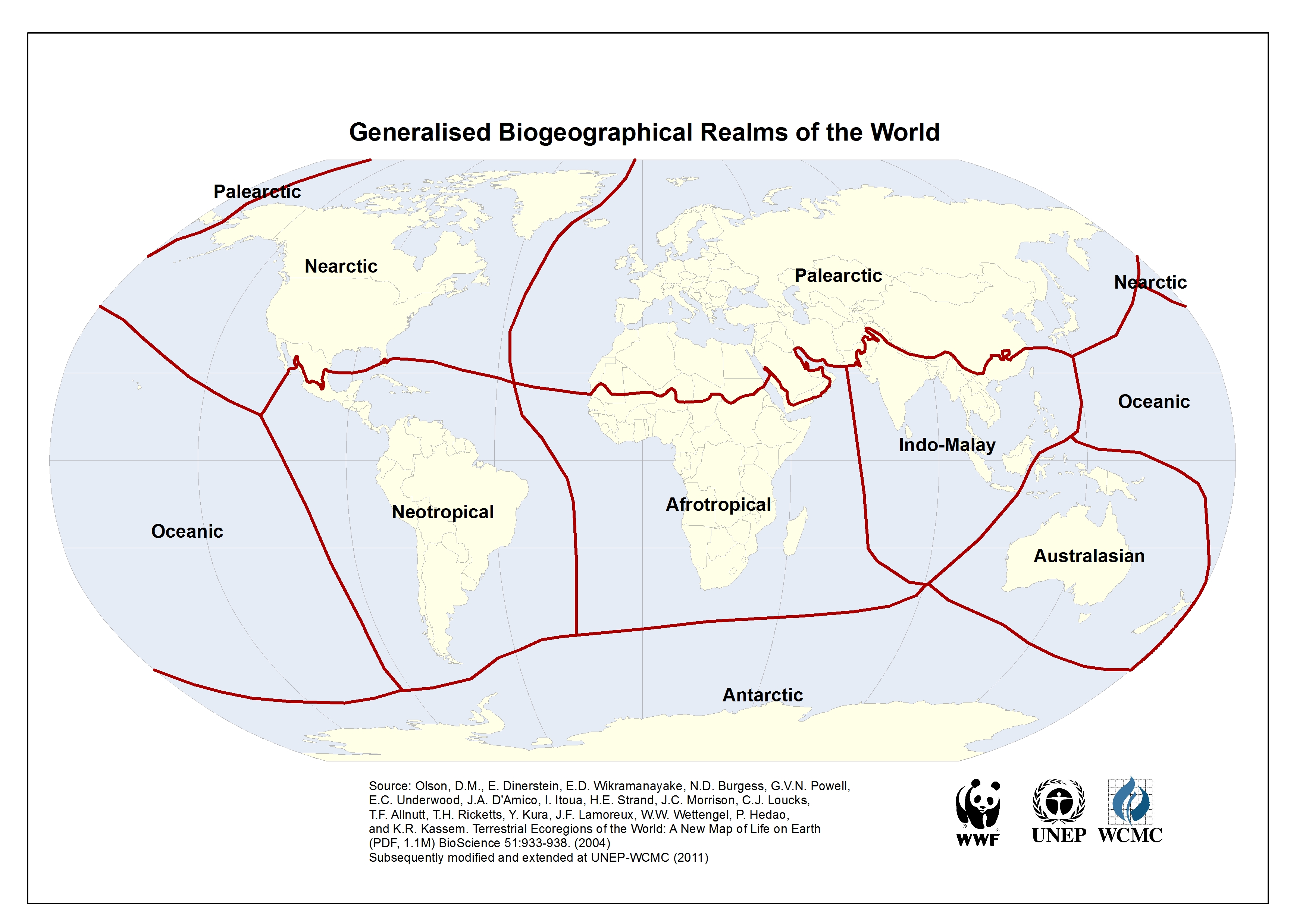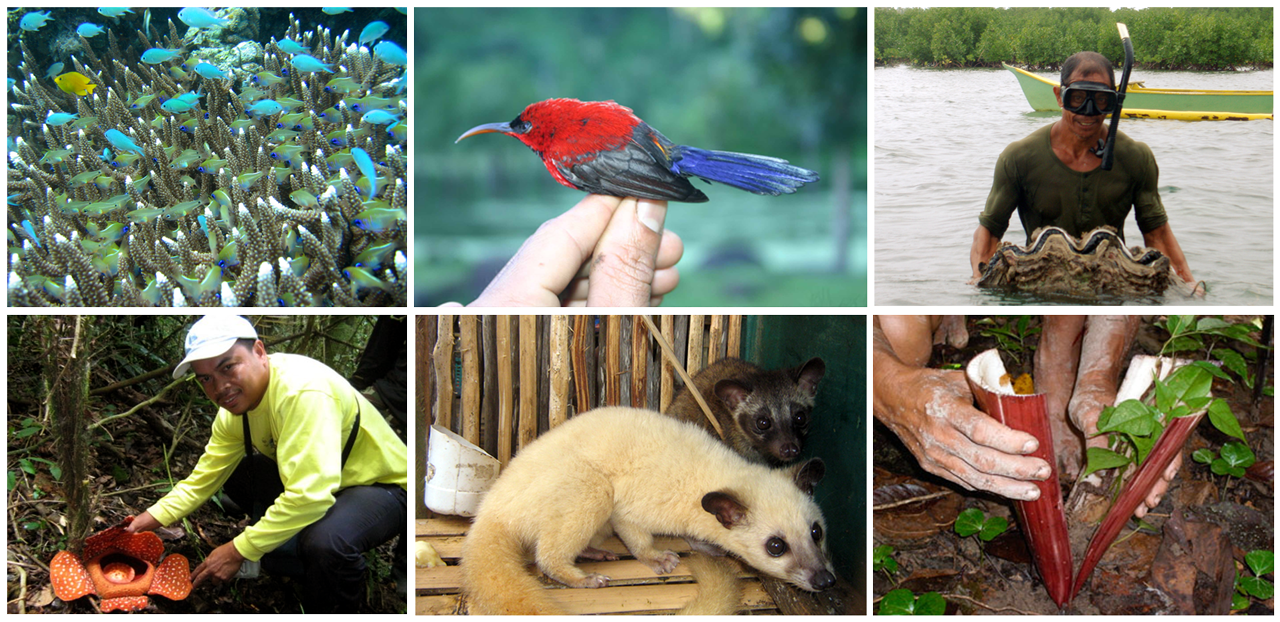Biodiversity
Life All Around: The Distribution of Biodiversity

Because of various influential factors such as topography, climate and access to sunlight, and evolutionary processes throughout the ages, biodiversity is not equally distributed across the world. There are regions of the earth that are able to support countless life forms, while there also are places that are nearly uninhabitable.
Where is Biodiversity Distributed?
Because of various influential factors such as topography, climate and access to sunlight, and evolutionary processes throughout the ages, biodiversity is not equally distributed across the world. There are regions of the earth that are able to support countless life forms, while there also are places that are nearly uninhabitable.
Udvardy (1975) delineated eight biogeographical regions of the world (see above) where organisms are distributed. The Philippines belongs in the Indo-Malay biogeographic province, which is known to be the planet's most diverse shallow marine area. (Source: UNEP)
A more substantial discussion of ecological regions (biomes) provided here can help you learn more.
The Philippines: Hub of Life
The Philippines belongs among the countries that are gifted with rich biological diversity. Its archipelagic composition, geographic location (i.e. its proximity to the equator), and tropical climate enable various forms of life and entire ecosystems to flourish across its 7,000-plus islands and hundreds of reefs, further enriching the locales’ natural beauty. Because of this, the country is recognized as one of the most biologically and ecologically diverse in the world – and one with the highest concentration of species per square kilometer, to boot. The Philippines, in fact, ranks second only to Madagascar in terms of having the highest number of endemic species (vertebrates and vascular plants) per unit area of habitat. That the Philippines is home to so many varied flora and fauna species adds even more to its mystique as one of the world’s top megadiversity countries.
The Philippines is brimming with all manner of living creatures, found in both terrestrial and aquatic habitats. About three-fourths of the entire world’s known species make their home in this archipelago. (FPE)
|
A Biodiversity Checklist
What is it about the Philippines that enables it to support 70-80% of the entire world’s species? Here are the geographic and ecological characteristics of the country that allow it to support such a varied and well-distributed diversity of species of wild fauna and flora.
|
References
- Catibog-Sinha CS, Heaney LR. 2006. Philippine Biodiversity: Principles and Practice. Quezon City, Philippines: Haribon Foundation for the Conservation of Natural Resources, Inc.
- Udvardy MDF. 1975. A Classification of the Biogeographical Provinces of the World. Occasional Paper of the IUCN Species Survival Commission No. 18. Morges, Switzerland: IUCN.
- United Nations Environment Programme (UNEP), World Conservation Monitoring Centre (WCMC). 2004. Biogeographic Realms (Generalised) (2004) [Map]. Last accessed on October 25, 2013, http://www.unep-wcmc.org/biogeographic-realms-2004_727.html.

 DISPLAY CALENDAR
DISPLAY CALENDAR


 Read Policy Briefs
Read Policy Briefs
 View Our Partners
View Our Partners
 Access Grants MIS
Access Grants MIS
 Login to Webmail
Login to Webmail